'Mocked' Mini Metro turns 40 and finds new fans
- Published
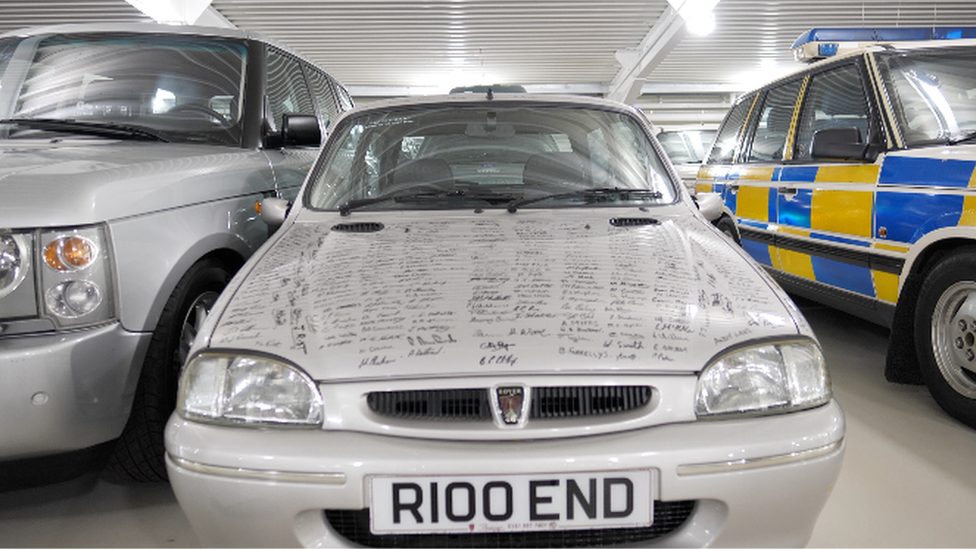
The final Rover 100 at the British Motor Museum is adorned with the names of the Rover workforce
There are about 300 cars at the British Motor Museum in Warwickshire - but only one is adorned with 1,000 signatures.
The significance of that vehicle, tucked away alongside some of the greatest cars ever produced in Britain, is revealed by its number plate.
R100 END was the last Metro ever built at the Longbridge factory in Birmingham, and the signatures on its paintwork are from the men and women that helped to produce it.
This year marks the 40th anniversary of the Metro launch, and an online exhibition, external has been created by the British Motor Museum to celebrate a car that divided opinion.

The Metro was seen as the potential saviour of the British car industry, and workers at Longbridge decided its name
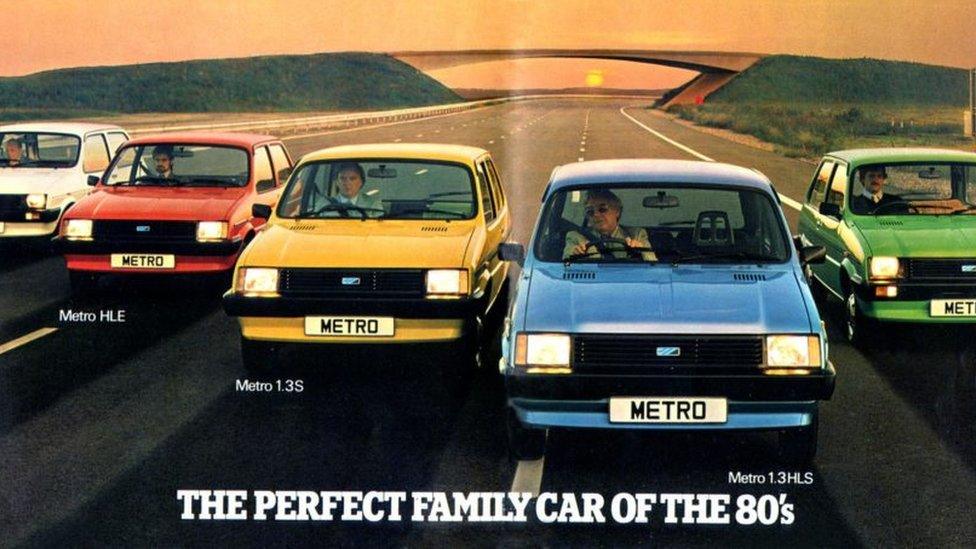
A striking advertising campaign carried the hopes of British Leyland that the Metro could take on and beat European and Japanese imports.
Originally under the Austin marque, the first model was designed in just over six weeks. The cheapest model was £3,095, undercutting its main rival, the Ford Fiesta, by £65.
Seventeen years later, now badged as the Rover 100, Metro number 2,078,219 became the final car to emerge from the production line.
The demise of the Metro was not widely mourned, but 40 years on from its launch, it is not difficult to find fans.
Online, there seems to be a growing affection from a younger generation of enthusiasts - in many cases fuelled by family nostalgia.
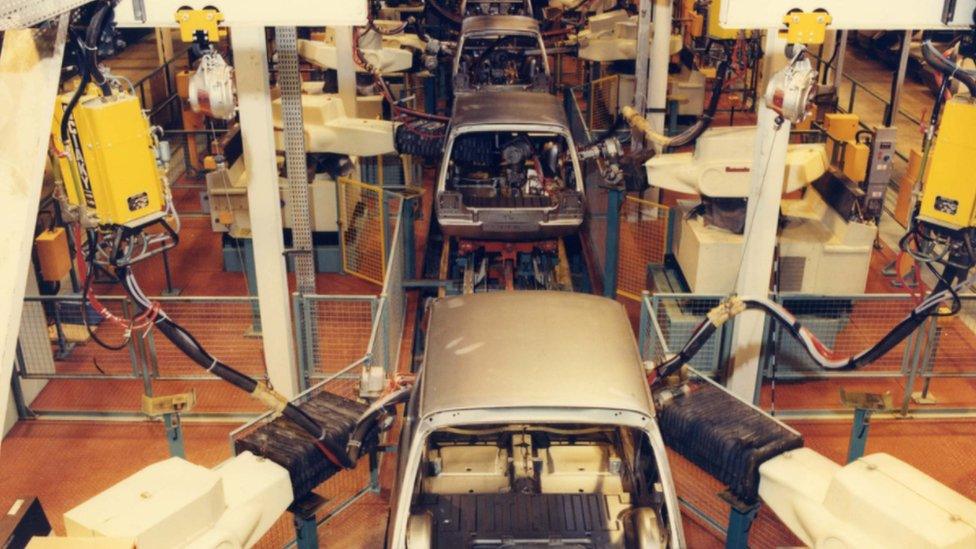
The Metro production line began life in 1980 at Longbridge, Birmingham
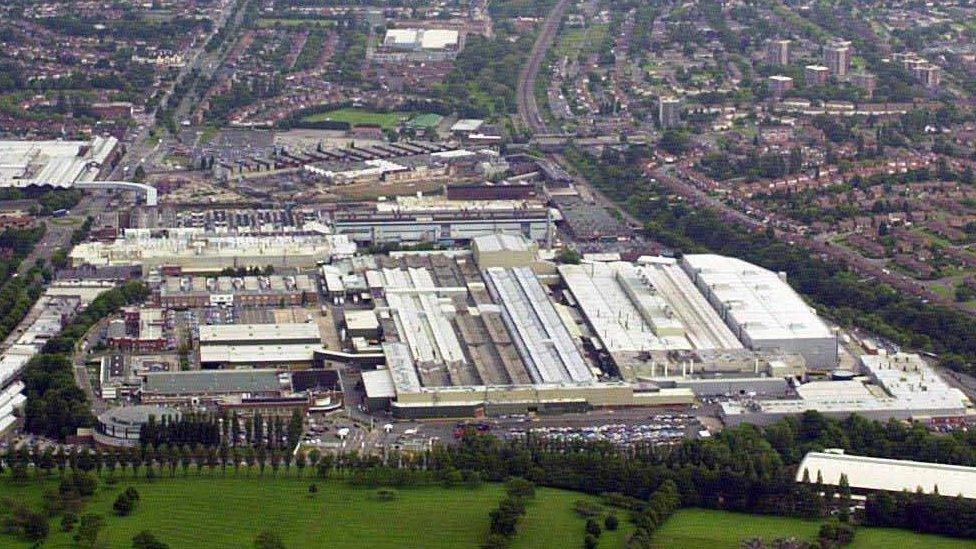
The giant plant closed in 2005 with the loss of 6,000 jobs
"We've got a loads of cars in our collection here and we like to celebrate the ordinary as being extraordinary, just as much as the super cars," says Cat Griffin, curator at the British Motor Museum.
"Sometimes you'll have a great moment in the museum where someone who actually worked on the car can find their name here on it.
"And it's those little connections of people learning to drive in the Metro, people's first car being the Metro - and that's what they connect with."
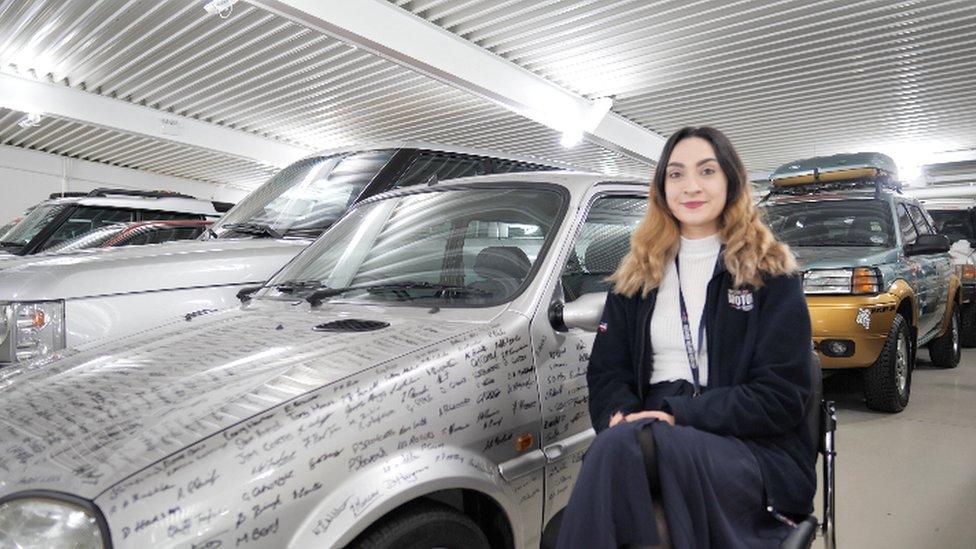
British Motor Museum curator Cat Griffin created the online Metro at Forty exhibition, at a time when the museum is having to work under coronavirus restrictions
Not all surviving Metros are of the quality on show at Gaydon. Ask someone what they associate with the car, and rust might feature towards the top end of the list.
That's why Gerrard Shaw, who runs the Metropower, external website, keeps his beloved Metro safely tucked away.
"It only comes out on special occasions these days," admits the 29-year-old from Leigh-on-Sea, Essex.
"The worst thing for Metros is rust, absolutely the worst. Mine stays out for the nice days and the shows. It leads a very spoiled life."

Gerrard Shaw with his pride and joy. He runs a website for fans of the Metro. There's also a Facebook group with 4,500 members
Mr Shaw finds himself at the forefront of a movement to preserve and enhance the reputation of the Metro.
"I think it's gone full circle over time. When it came out, it was quite a brave hope for the future.
"You can see the Top Gear features in the 90s when it started rusting a bit, and they're seen as a banger, a little bit of a joke."
Steve Coogan's Alan Partridge character put the boot in too. A BBC sketch where he repeatedly says "I'm not driving a Mini Metro" has been watched more than half a million times on YouTube.
First car
But now there appears to be an emotional renaissance.
"When I'm out in the Metro, you get people saying 'yay, I had one of those'," said Mr Shaw.
"And I have it at shows, you get people coming over 'it was my first car, it was my parents' car'.
"It seems like a good memory for everyone. It triggers something, family, friends. And I think they are shocked to still see them out on the road."
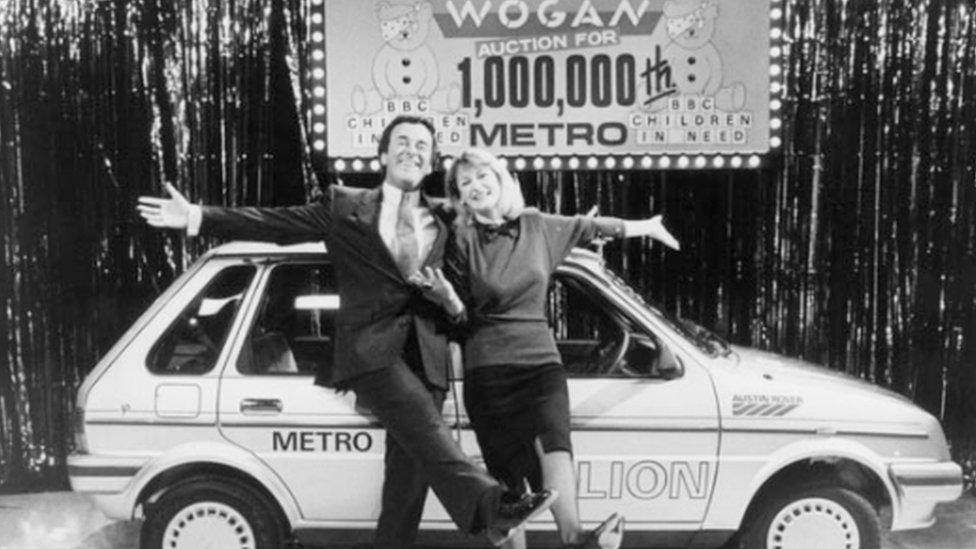
The Metro even became a star of Children in Need, as the one millionth vehicle was auctioned off for the charity by presenters Sir Terry Wogan and Sue Cook
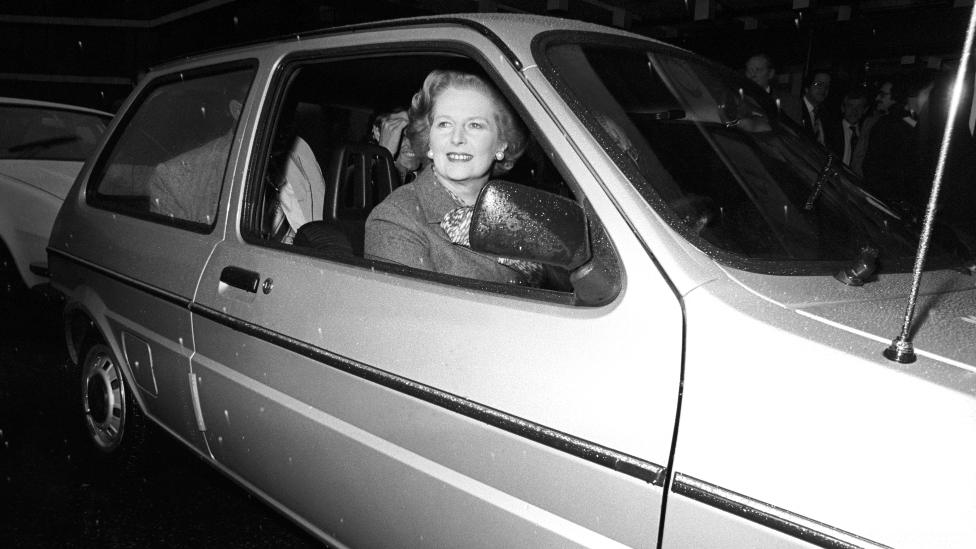
Behind the wheel of a Metro at the NEC Motor Show in 1980, Prime Minister Margaret Thatcher
At Biggin Hill in Kent, David Collins perfectly fits the brief of a modern Metro man.
"Dad saw it as a better Mini. Hatchback, five seats, better engine, more comfortable, a bit more modern," the 28-year-old said.
'An underdog'
Father and son used to display their Metros at classic car shows, and David remembers the sniggers.
"I just like an underdog," he said. "Metros were always considered the dowdy city cars.
"It is kind of sad you don't see them any more and there's half as many left as there are Minis, or XR2s or GTIs or whatever, but I just like the uniqueness and the underdog feel of it."
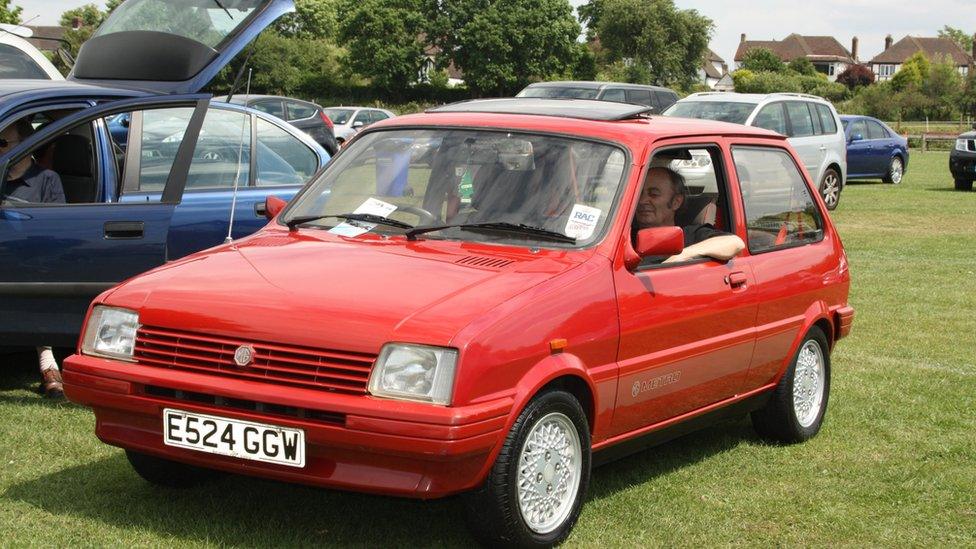
David Collins' late father Gerald loved to display his Metro at car shows, and David is continuing that tradition
He said classic car enthusiasts now appeared to be warming to the Metro.
"For so long they were mocked, 'what do you want one of them for?' And even now if you do speak to people of a certain age and tell them you've got a classic car, they still see the Metro as a daily old car.
"You can't go around saying they are the best car ever because they're not.
"But they deserve to get their recognition now. They're a good little car."
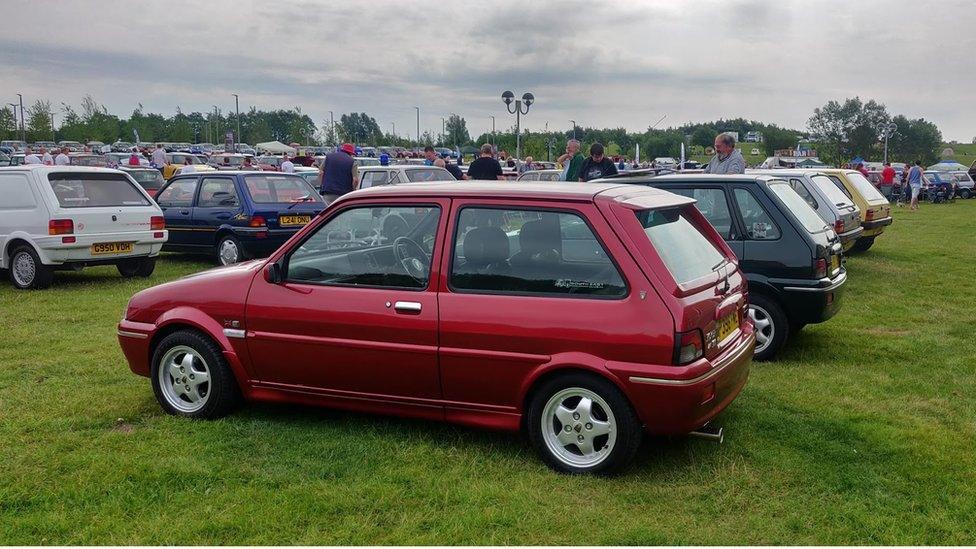

Follow BBC West Midlands on Facebook, external, Twitter, external and Instagram, external. Send your story ideas to: newsonline.westmidlands@bbc.co.uk , external